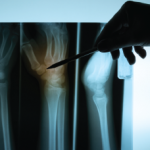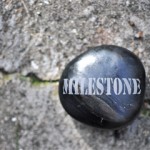 A retrospective study of five practicing academic rheumatologists at the Loma Linda University School of Medicine, California, revealed that for every dollar billed in an office visit, $12.14 was generated in downstream revenue to the health system.1
A retrospective study of five practicing academic rheumatologists at the Loma Linda University School of Medicine, California, revealed that for every dollar billed in an office visit, $12.14 was generated in downstream revenue to the health system.1
Kathleena M. D’Anna, DO, a fellow in the Division of Rheumatology at Loma Linda, and colleagues adjusted the documented downstream revenue for inflation and found that it was comparable to that calculated in 2005 by Wickersham et al. (i.e., $10.02 for every $1.00 billed).2 However, the authors write that the study by Wickersham et al. was performed in Colorado, where reimbursement rates based on Medicare data are lower than in Southern California.
Infusion of Biologics Drives Profits
In the 15 years since the Wickersham study, the field of rheumatology has experienced an increase in the number of biologic agents available to treat patients, as well as an increase in the incorporation of diagnostic tools, such as ultrasound and targeted blood markers.3
The investigators designed the study to determine if the relationship between direct clinical services rendered by a rheumatologist through patient care and the downstream revenue earned by a hospital system from these encounters had changed from 2005 to 2020. Their study included only revenue generated by available Medicare allowable charges. The authors note that although Loma Linda University Hospital participates in the 340b pricing program that helps make healthcare and prescription drugs more affordable, discounted prices were proprietary and inaccessible to the researchers. Thus, the team estimated 340b cost to be 60% of published wholesale acquisition prices.
Although the investigators found the downstream revenue remained stable from 2005 to 2020, they documented an overall increase in the dollar amount generated from laboratory studies, radiology and consults with other specialists when compared with the 2005 Wickersham study. The main driver of the downstream revenue in the current study, as well as the Wickersham study, was infused medications. However, the authors note their study likely underestimates infusion revenue because their hospital—like most hospitals—lacks transparency on billing processes for such procedures.
Cognitive Specialists Undervalued
The investigators found academic rheumatologists averaged an annual production of 4,755 work relative value units (wRVUs), which is similar to that averaged by private practice rheumatologists (4,821 wRVUs).4 This finding means that although academic researchers have academic obligations outside medical care, they appear to have very little time set aside for such activities. The researchers explain in their discussion that academic rheumatologists may find it difficult to balance their demanding outpatient clinical practice treating chronic and complex medical issues with expectations of scholarly activity intended to benefit their patients and community.
Senior author Christina Downey, MD, a rheumatologist at Loma Linda University School of Medicine, also notes that the evaluation and management codes tend to undervalue the revenue generated by a rheumatologist. Example: She says that after adjusting for inflation, Medicare reimbursement for the evaluation and management code 99214, which is used for care requiring moderate complexity medical decision making or a total of 30–39 minutes devoted to the encounter on the date of the visit, has remained stagnant from 2005 to 2020. This finding is true despite the increase of indirect overhead costs, such as hospital administrative, financial and legal operations.
The authors hope their study will aid individuals in positions of leadership in academic health systems use the overall value rheumatologists bring to the health system as an argument for higher compensation or more protected time for clinical academic rheumatologists.
“What we are trying to do with this paper is to arm practicing rheumatologists with the knowledge of the value that they bring,” says Dr. Downey, noting that rheumatologists are cognitive specialists who, unlike orthopedic surgeons, cannot rely on high volume procedures.
In their article, the authors note that interventional cardiologists are well compensated due, in part, to the revenue brought to the hospital system from their procedures, and they argue the same consideration should be given to rheumatologists.
Lara C. Pullen, PhD, is a medical writer based in the Chicago area.
References
- D’Anna KM, Lynch CS, Cabling M, et al. Clinical academic rheumatology: a boon for health systems. Arthritis Care Res (Hoboken). 2022 Jan 17. Online ahead of print.
- Wickersham P, Golz D, West SG. Clinical academic rheumatology: Getting more than you pay for. Arthritis Rheum. 2005 Apr 15;53(2):149–154.
- Romao VC, Fonseca JE. Major challenges in rheumatology: Will we ever treater smarter, instead of just harder? Front Med (Lausanne). 2019 Jun 26;6:144.
- Rappleye E. 2015 Physician compensation, work RVU by specialty. Becker’s Hospital Review. 2019 Jul 20.



